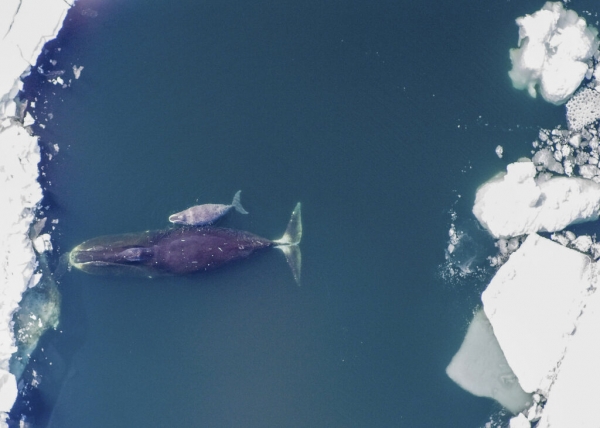Shrinking sea ice and shifts in summer food availability have shifted the whales’ migration patterns.
Shrinking sea ice and shifts in summer food availability have shifted the whales’ migration patterns. But as the whales spend more time in the far north, they face higher risks of ship strikes.
The population of bowhead whales that migrates between the Bering and Beaufort Seas each year is a conservation success story, with today’s population nearing — if not exceeding — pre-commercial whaling numbers. But climate change is shifting the whales’ feeding grounds and migration patterns, potentially pushing them to spend more time in the paths of oncoming ships, according to a new study.
Researchers used more than a decade of acoustic data to monitor bowhead whales’ movements between their usual overwintering grounds in the Bering Sea and summer feeding grounds in the Chukchi and Beaufort Seas. The whales departed the summer feeding grounds about six weeks later in 2022 than in 2008, based on the acoustic data.
Some are also spending winter farther north in the Chukchi Sea, where commercial traffic in particular has been increasing. That means they could be lingering longer in shipping lanes, which grow busier as sea ice shrinks.
Read more at American Geophysical Union
Image: In response to climate change, bowhead whales are changing their migratory patterns. That could put them at higher risk of ship strikes as sea-ice extent continues to decline and shipping traffic increases, according to new research in Geophysical Research Letters. (Credit: NOAA)




